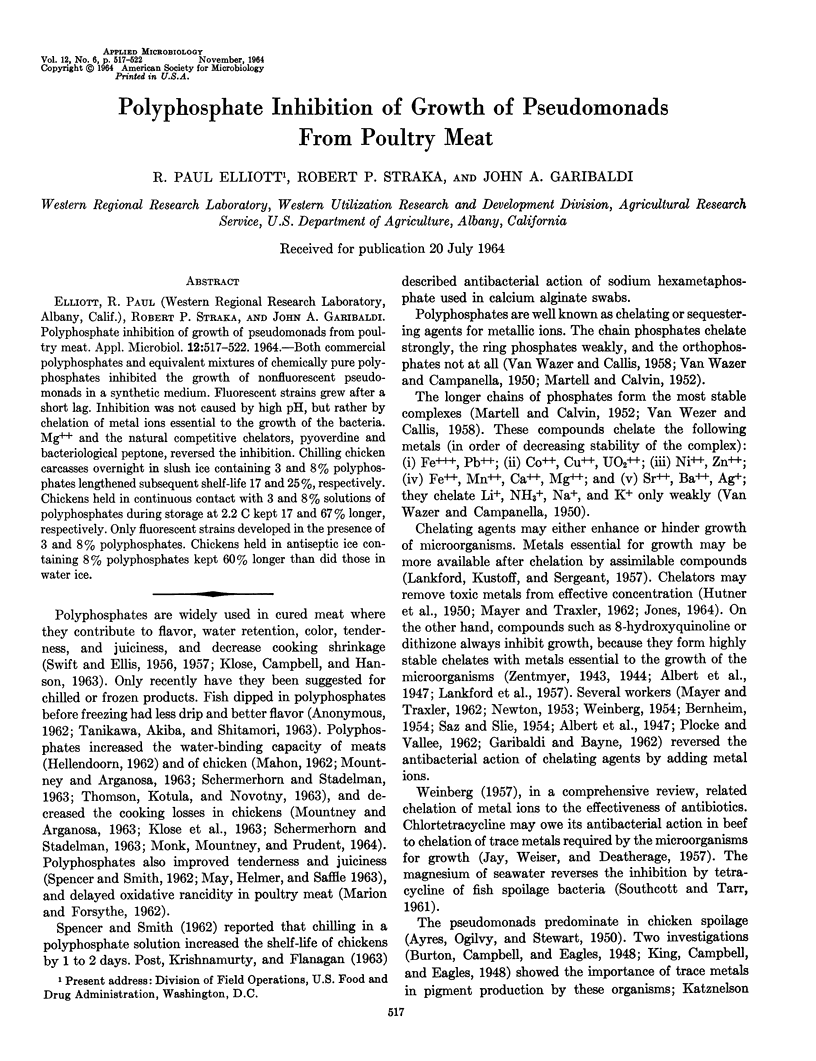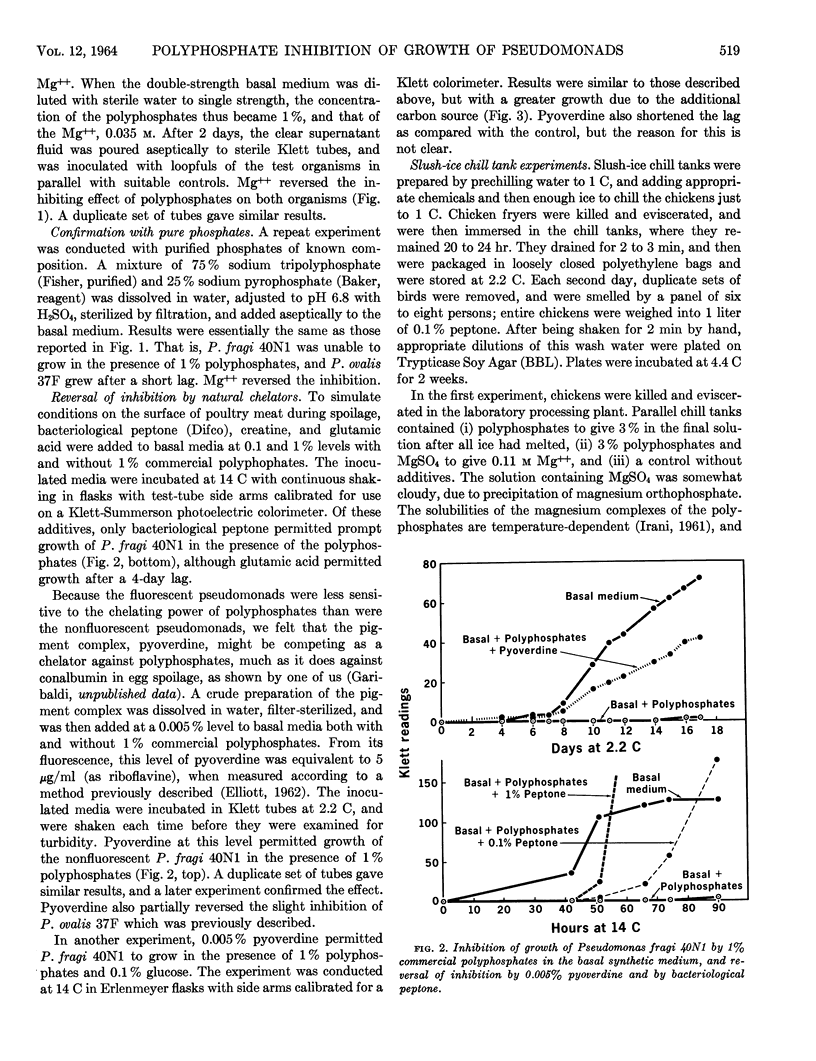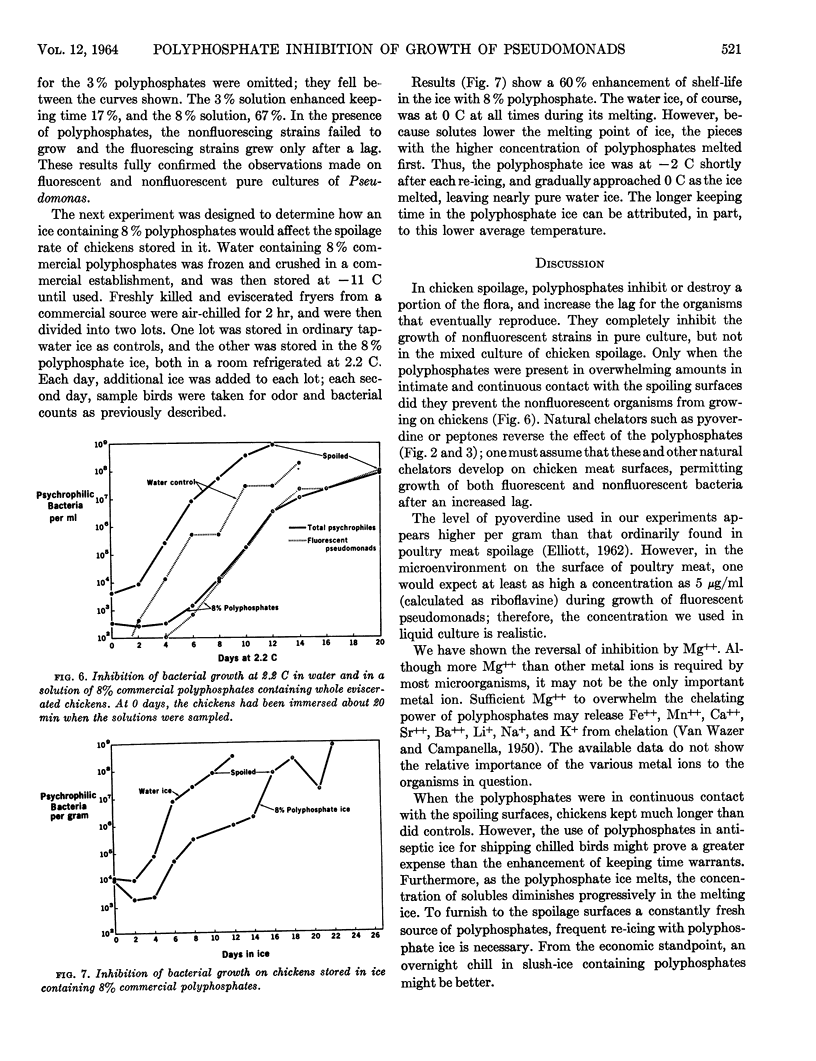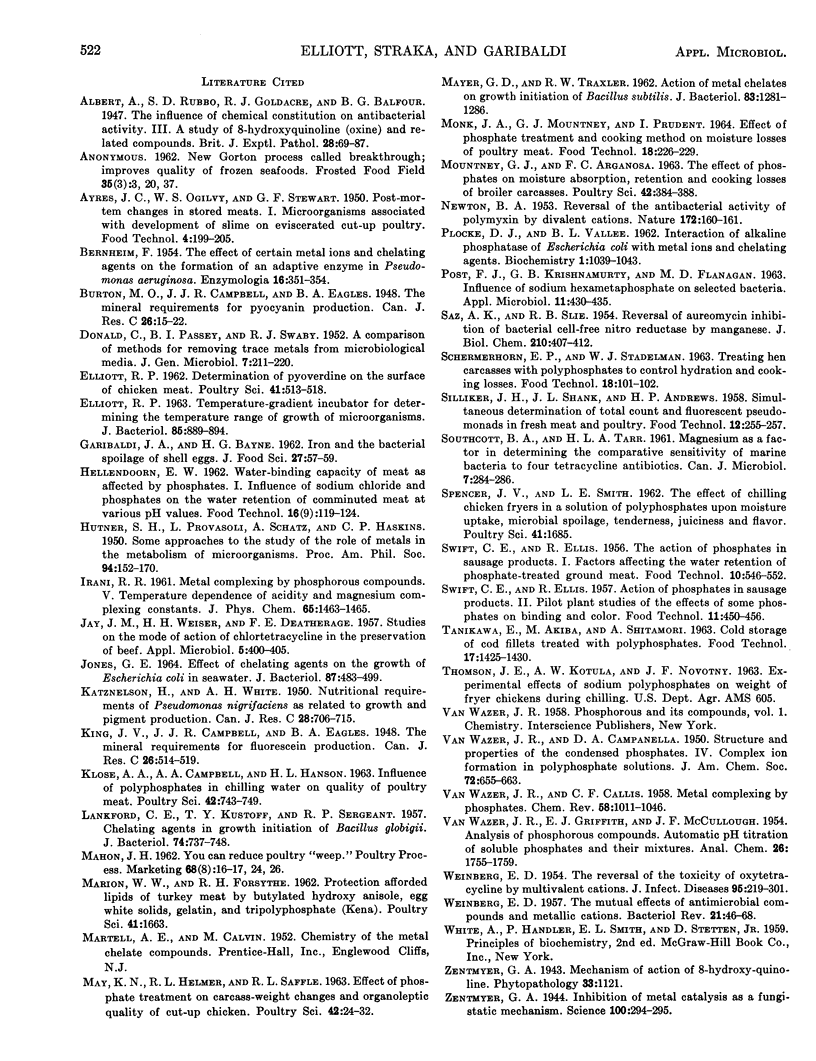Abstract
Both commercial polyphosphates and equivalent mixtures of chemically pure polyphosphates inhibited the growth of nonfluorescent pseudomonads in a synthetic medium. Fluorescent strains grew after a short lag. Inhibition was not caused by high pH, but rather by chelation of metal ions essential to the growth of the bacteria. Mg++ and the natural competitive chelators, pyoverdine and bacteriological peptone, reversed the inhibition. Chilling chicken carcasses overnight in slush ice containing 3 and 8% polyphosphates lengthened subsequent shelf-life 17 and 25%, respectively. Chickens held in continuous contact with 3 and 8% solutions of polyphosphates during storage at 2.2 C kept 17 and 67% longer, respectively. Only fluorescent strains developed in the presence of 3 and 8% polyphosphates. Chickens held in antiseptic ice containing 8% polyphosphates kept 60% longer than did those in water ice.
Full text
PDF





Selected References
These references are in PubMed. This may not be the complete list of references from this article.
- BERNHEIM F. The effect of certain metal ions and chelating agents on the formation of an adaptive enzyme in Pseudomonas aeruginosa. Enzymologia. 1954 May 15;16(6):351–354. [PubMed] [Google Scholar]
- DONALD C., PASSEY B. I., SWABY R. J. A comparison of methods for removing trace metals from microbiological media. J Gen Microbiol. 1952 Nov;7(3-4):211–220. doi: 10.1099/00221287-7-3-4-211. [DOI] [PubMed] [Google Scholar]
- ELLIOTT R. P. TEMPERATURE-GRADIENT INCUBATOR FOR DETERMINING THE TEMPERATURE RANGE OF GROWTH OF MICROORGANISMS. J Bacteriol. 1963 Apr;85:889–894. doi: 10.1128/jb.85.4.889-894.1963. [DOI] [PMC free article] [PubMed] [Google Scholar]
- JAY J. M., WEISER H. H., DEATHERAGE F. E. Studies on the mode of action of chlortetracycline in the preservation of beef. Appl Microbiol. 1957 Nov;5(6):400–405. doi: 10.1128/am.5.6.400-405.1957. [DOI] [PMC free article] [PubMed] [Google Scholar]
- JONES G. E. EFFECT OF CHELATING AGENTS ON THE GROWTH OF ESCHERICHIA COLI IN SEAWATER. J Bacteriol. 1964 Mar;87:483–499. doi: 10.1128/jb.87.3.483-499.1964. [DOI] [PMC free article] [PubMed] [Google Scholar]
- LANKFORD C. E., KUSTOFF T. Y., SERGEANT T. P. Chelating agents in growth initiation of Bacillus globigii. J Bacteriol. 1957 Dec;74(6):737–748. doi: 10.1128/jb.74.6.737-748.1957. [DOI] [PMC free article] [PubMed] [Google Scholar]
- MAYER G. D., TRAXLER R. W. Action of metal chelates on growth initiation of Bacillus subtilis. J Bacteriol. 1962 Jun;83:1281–1286. doi: 10.1128/jb.83.6.1281-1286.1962. [DOI] [PMC free article] [PubMed] [Google Scholar]
- NEWTON B. A. Reversal of the antibacterial activity of polymyxin by divalent cations. Nature. 1953 Jul 25;172(4369):160–161. [PubMed] [Google Scholar]
- PLOCKE D. J., VALLEE B. L. Interaction of alkaline phosphatase of E. coli with metal ions and chelating agents. Biochemistry. 1962 Nov;1:1039–1043. doi: 10.1021/bi00912a014. [DOI] [PubMed] [Google Scholar]
- POST F. J., KRISHNAMURTY G. B., FLANAGAN M. D. INFLUENCE OF SODIUM HEXAMETAPHOSPHATE ON SELECTED BACTERIA. Appl Microbiol. 1963 Sep;11:430–435. doi: 10.1128/am.11.5.430-435.1963. [DOI] [PMC free article] [PubMed] [Google Scholar]
- SAZ A. K., SLIE R. B. Reversal of aureomycin inhibition of bacterial cell-free nitro reductase by manganese. J Biol Chem. 1954 Sep;210(1):407–412. [PubMed] [Google Scholar]
- WEINBERG E. D. The mutual effects of antimicrobial compounds and metallic cations. Bacteriol Rev. 1957 Mar;21(1):46–68. doi: 10.1128/br.21.1.46-68.1957. [DOI] [PMC free article] [PubMed] [Google Scholar]
- WEINBERG E. D. The reversal of the toxicity of oxytetracycline (terramycin) by multivalent cations. J Infect Dis. 1954 Nov-Dec;95(3):291–301. doi: 10.1093/infdis/95.3.291. [DOI] [PubMed] [Google Scholar]
- Zentmyer G. A. INHIBITION OF METAL CATALYSIS AS A FUNGISTATIC MECHANISM. Science. 1944 Sep 29;100(2596):294–295. doi: 10.1126/science.100.2596.294. [DOI] [PubMed] [Google Scholar]


